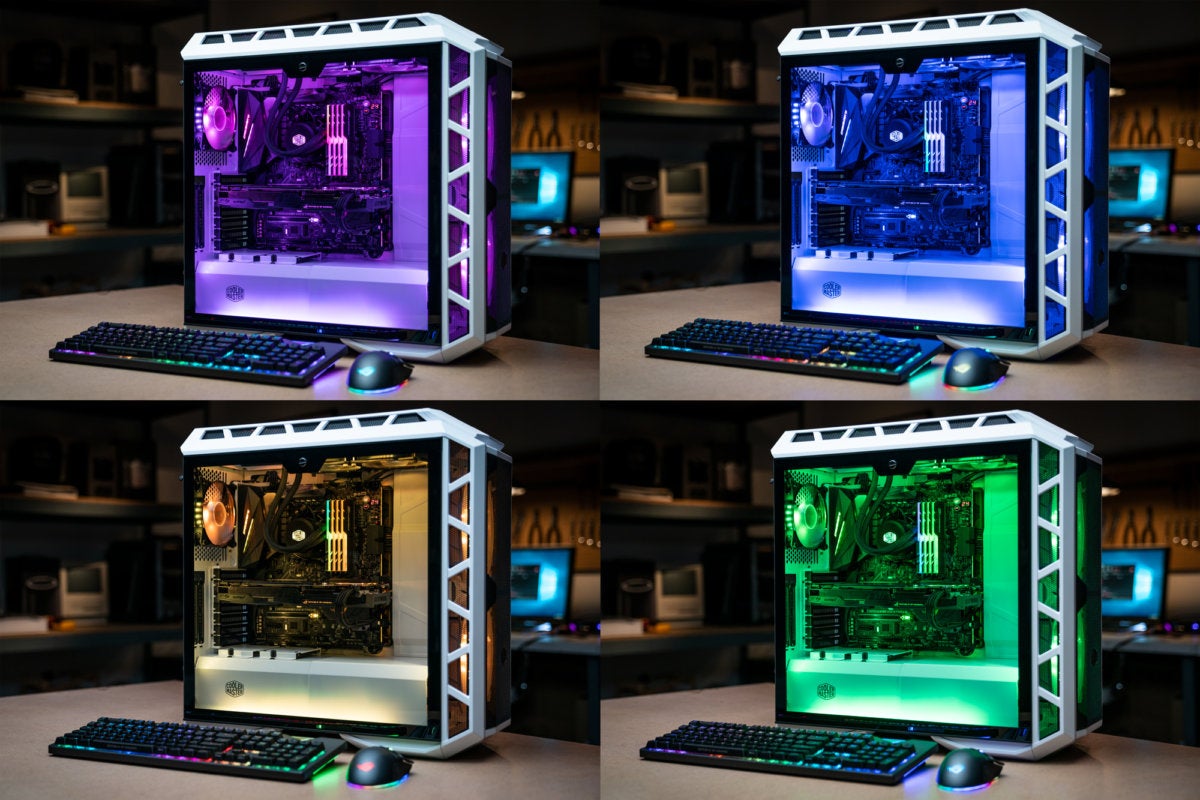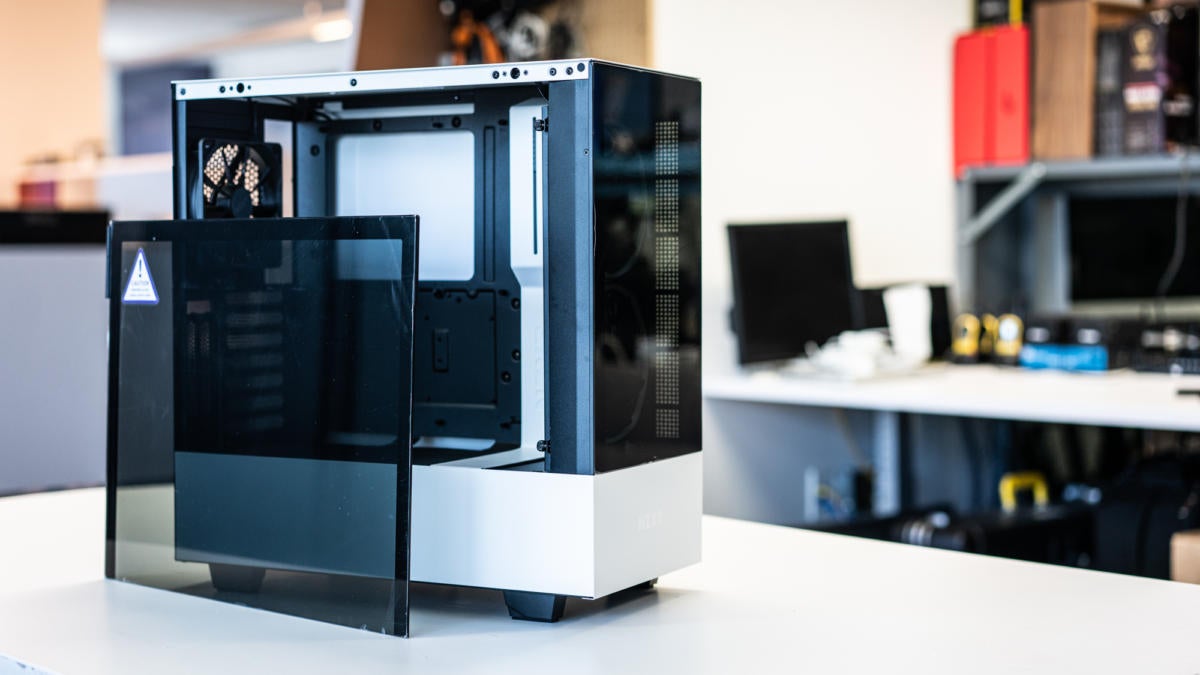“Best” is a bit of a subjective term.

Adam Patrick Murray / IDG
Today’s Best Tech Deals
Picked by PCWorld’s Editors
Top Deals On Great Products
Picked by Techconnect’s Editors
Q: If you had to choose your favorite case right now, what would it be? And are there any overhyped ones I should avoid?
A: Assuming only one choice is permitted for this answer, I’ll pick a case that has strong, well-rounded appeal—the Corsair 4000D Airflow. This mid-tower has most everything today’s builders expect: a sleek minimalist look, good airflow, affordable price, and enough room to fit ATX motherboards. It also earns extra kudos for its swappable front panels, which allow you to change the style of the case and cost just $10 or less (plus shipping). If you start with the Airflow model and find that you prefer the quiet of a solid panel (or the look of a glass panel), you can make that swap with little fuss and additional cash outlay.
A fan-favorite alternative would be the Lian Li Lancool II Mesh, which doesn’t have the front panel modularity of the Corsair 4000D but provides excellent airflow, a smart layout, and tempered glass on both side panels. We prefer it as an alternative to the Corsair 4000X, which is more expensive than the Lancool II Mesh by about $50, and is a bit showier, too.
Of course, the beauty of the PC is that people build systems in a variety of sizes. If you’ve had particular interest in small-form-factor projects, vendors have slowly been adding builder-friendly, affordable sub-20L cases to their line-ups. In fact, over the last couple of years, a couple have won fans nearly immediately: the 18L Cooler Master NR200 (and its glass variant, the NR200P) launched with an astonishingly low price tag ($79), while still delivering good temperatures and a straightforward layout. It matches the affordability of ATX cases—not typical for this space, where some can run as high as $200.
Like most SFF cases, though, the NR200 requires a small-form-factor (SFX or SFX-L) power supply—so our other SFF recommendation is the SSUPD Meshlicious. This Xbox Series X lookalike accommodates SFX, SFX-L, and ATX power supplies despite being just under 15L and is also fairly straightforward to build in. (Though it’s not quite as easy as the NR200.) You won’t necessarily save money purchasing the Meshlicious, as it costs about $50 more than the NR200 for the cheapest version, but it will work with a high-end modular ATX power supply you want to build around.
 Adam Patrick Murray / IDG
Adam Patrick Murray / IDGFew cases are overhyped—case in point is the NZXT H510, a compact mid-tower case that looks good and offers budget builders solid value. (Pictured here is the H510 Elite, a more expensive RGB version with a glass front panel.)
As for “overhyped” cases—one person’s overhyped is another’s perfect match. For example: We have gotten comments from folks who believe that the Lian Li O11 Dynamic (aka O11D) and NZXT H510 get too much attention in YouTube videos. But those cases are popular for a reason: Not only does the O11D serve as an excellent showcase for builds that go all out with fans, watercooling, and RGB, but it’s easy to build in and has a well-designed layout. And the H510 pairs a streamlined, modern look with a good value, making it friendly to budget builders. (It includes two fans and modern front I/O ports, aka USB-C.)
Sure, these two cases aren’t designed to be broad in appeal, like the Corsair 4000 series. Many who aren’t into elaborate, showy builds will find the Lian Li O11D all wrong for them. Similarly, someone who focuses on keeping temps as cool as possible in a PC will dislike the NZXT H510’s airflow path. For the wrong audience, the O11D and H510 will sem overhyped.
For me, the overhyped cases are the ones that swing big and miss—where anyone who’s backed it or purchased it is now stuck with severe flaws. Fortunately, those are few and far between these days. Case manufacturers are more careful to get feedback nowadays, as they’re as eager to avoid lack of interest and unsold inventory. Word of mouth spreads incredibly fast on the internet.
Note: When you purchase something after clicking links in our articles, we may earn a small commission. Read our affiliate link policy for more details.

